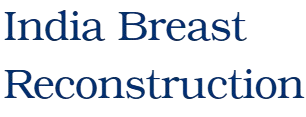Anaesthetic and Safety Issues
Before any major surgery an Anaesthetic assessment is carried out by an Anaesthetist. This is usually done a couple of weeks before surgery. The doctor will take your medical history and ask some general health questions. This helps to ascertain if you are fit for a lengthy procedure. You are assessed as low, medium or high risk from the anaesthetic point of view and this enables the Anaesthetist to take any necessary steps ensure your safety during surgery.
Some of the issues the Anaesthetist will be interested in are outlined below.
Fit and slender patients tend to have fewer problems with anaesthetic, surgery, blood pressure, after surgery. This reduces the risk of Deep Vein Thrombosis (DVT). It is important that conditions such as high blood pressure, diabetes, asthma etc are well controlled prior to surgery.
Patients are generally asked if they could stop taking any supplements, herbal remedies, homeopathic medication or complementary medicine not prescribed by a G.P. The reasoning behind this is that many of these remedies and tablets can cause excessive bleeding during surgery. Ideally this should be done at least 3 weeks before surgery but obviously if the operation is scheduled quickly then as soon as the patient can.
It is also advisable to stop smoking. Smoking causes the blood to carry less oxygen. This can prevent wounds healing, increases the risk of infection and can even cause tissue to die (necrosis) which for breast reconstruction using your own tissue would be disastrous. You should try to stop smoking for a minimum of six weeks, but ideally if time permits 3-4 months. Patches should be avoided as they are problematic for surgery.
MASTECTOMY
The formation of blood clots in the deep veins of the legs that travel to the lungs can be fatal. Death from Pulmonary Embolus is very rare. Precautions are always taken. The use of compression socks during surgery is common and some patients will receive blood thinning injections. Those at higher risk are patients who are overweight and/ or smoke.
The Anaesthetist along with surgeon will decide which pre- admission tests and blood tests need to be carried out.
The breast is removed with most of the overlying skin. It is then closed leaving a straight scar on the chest. This is the most commonly performed operation. Breast reconstruction will or can be carried out at a later date (Delayed Reconstruction).
In skin-sparing mastectomy the main difference is the amount of skin left behind. EMIR or CAMIR mastectomies are carried out when immediate reconstruction is planned.
EMIR is when a neat, single cut is made at the underarm side of the breast and the breast tissue removed leaving the breast skin and the nipple. The breast is then reconstructed.
CAMIR is when the nipple is removed and the breast tissue taken away using that opening. The breast and the nipple is then reconstructed. Removal of the nipple is thought to be preferable as this contains breast tissue. However there is now some evidence emerging to suggest that recurrence of breast cancer is no higher than when the nipple is removed, and in a selected group of patients the breast surgeon may decide to leave the nipple behind.
Deep Vein Thrombosis (DVT) and Pulmonary Embolus (PE)
The formation of blood clots in the deep veins of the legs that travel to the lungs can be fatal. Death from Pulmonary Embolus is very rare. Precautions are always taken. The use of compression socks during surgery is common and some patients will receive blood thinning injections. Those at higher risk are patients who are overweight and/ or smoke.
The Anaesthetist along with surgeon will decide which pre- admission tests and blood tests need to be carried out.
